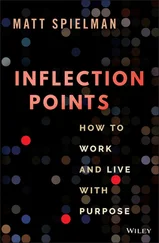***Unfortunately, the trigger provision was later repealed by the Democratically controlled Congress.
****Republicans used 527s, too, but Democrats outraised us three to one, $186.8 million to $61.5 million.
*****The Social Security team was led by Treasury Secretary John Snow and White House advisers Andy Card, Karl Rove, Al Hubbard, Keith Hennessey, and Chuck Blahous.

 ho’s in charge of security in New Orleans?” I asked.
ho’s in charge of security in New Orleans?” I asked.
My question silenced the raucous discussion in the Air Force One conference room on Friday, September 2, 2005. “The governor is in charge,” Mayor Ray Nagin said, pointing across the dark wood table at Governor Kathleen Blanco.
Every head pivoted in her direction. The Louisiana governor froze. She looked agitated and exhausted. “I think it’s the mayor,” she said noncommittally.
Four days had passed since Hurricane Katrina smashed into the Gulf Coast. Winds above 120 miles per hour had flattened the Mississippi coastline and driven a wall of water through the levees of New Orleans. Eighty percent of the city, home to more than 450,000 people, had flooded. Reports of looting and violence filled the news.
By law, state and local authorities lead the response to natural disasters, with the federal government playing a supporting role. That approach had worked during the eight hurricanes, nine tropical storms, and more than two hundred tornadoes, floods, wildfires, and other emergencies we had faced since 2001. State and local first responders were in command of the Katrina response in Alabama and Mississippi, where I had visited earlier in the day. But after four days of chaos, it was clear the authorities in Louisiana could not lead.
The initial plan had been for me to land at the New Orleans airport, pick up Governor Blanco and Mayor Nagin, and survey the damage on an aerial tour. But on the Marine One flight from Mississippi, we received word that the governor, mayor, and a Louisiana congressional delegation were demanding a private meeting on Air Force One first.

Aboard Air Force One at the New Orleans airport. ( Clockwise at table: ) Ray Nagin, Mary Landrieu, David Vitter, Mike Chertoff, Bobby Jindal, William Jefferson, and Kathleen Blanco. White House/Eric Draper
The tone started out tense and got worse. The governor and mayor bickered. Everyone blasted the Federal Emergency Management Agency for failing to meet their needs. Congressman Bobby Jindal pointed out that FEMA had asked people to email their requests, despite the lack of electricity in the city. I shook my head. “We’ll fix it,” I said, looking at FEMA Director Mike Brown. Senator Mary Landrieu interrupted with unproductive emotional outbursts. “Would you please be quiet?” I had to say to her at one point.
I asked to speak to Governor Blanco privately. We walked out of the conference room, through a narrow passageway, and into the small cabin at the front tip of Air Force One. I told her it was clear the state and local response forces had been overwhelmed. “Governor,” I pressed, “you need to authorize the federal government to take charge of the response.”
She told me she needed twenty-four hours to think it over.
“We don’t have twenty-four hours,” I snapped. “We’ve waited too long already.”
The governor refused to give an answer.
Next I asked to meet privately with Mayor Nagin. He had spent four days since Katrina holed up in a downtown hotel. He hadn’t bathed or eaten a hot meal until he used my shower and ate breakfast on Air Force One. In a radio interview the previous evening, he had vented his frustrations with the federal government. “Get off your asses and do something,” he said, “and let’s fix the biggest goddamn crisis in the history of this country.” Then he broke down in tears. When I met him on the plane, Ray whispered an apology for his outburst and explained that he was exhausted.
I asked the mayor what he thought about federalizing the response. He supported it. “Nobody’s in charge,” he said. “We need a clear chain of command.” But only the governor could request that the federal government assume control of the emergency.

By the time the damage had been tallied, Hurricane Katrina ranked as the costliest natural disaster in American history. In truth, it was not a single disaster, but three—a storm that wiped away miles of the Gulf Coast, a flood caused by breaches in the New Orleans levees, and an outbreak of violence and lawlessness in the city.
On one level, the tragedy showed the helplessness of man against the fury of nature. Katrina was an enormously powerful hurricane that struck a part of the country that lies largely below sea level. Even a flawless response would not have prevented catastrophic damage.
The response was not only flawed but, as I said at the time, unacceptable. While there were inspiring acts of selflessness and heroism during and after the storm, Katrina conjures impressions of disorder, incompetence, and the sense that government let down its citizens. Serious mistakes came at all levels, from the failure to order a timely evacuation of New Orleans to the disintegration of local security forces to the dreadful communications and coordination. As the leader of the federal government, I should have recognized the deficiencies sooner and intervened faster. I prided myself on my ability to make crisp and effective decisions. Yet in the days after Katrina, that didn’t happen. The problem was not that I made the wrong decisions. It was that I took too long to decide.
I made an additional mistake by failing to adequately communicate my concern for the victims of Katrina. This was a problem of perception, not reality. My heart broke at the sight of helpless people trapped on their rooftops waiting to be rescued. I was outraged by the fact that the most powerful country in the world could not deliver water to mothers holding their dehydrated babies under the baking sun. In my thirteen visits to New Orleans after the storm, I conveyed my sincere sympathy for the suffering and my determination to help residents rebuild. Yet many of our citizens, particularly in the African American community, came away convinced their president didn’t care about them.
Just as Katrina was more than a hurricane, its impact was more than physical destruction. It eroded citizens’ trust in their government. It exacerbated divisions in our society and politics. And it cast a cloud over my second term.
Soon after the storm, many made up their minds about what had happened and who was responsible. Now that time has passed and passions have cooled, our country can make a sober assessment of the causes of the devastation, the successes and failures of the response, and, most important, the lessons to be learned.

I replayed the scene in my mind: The storm damage was extensive. The governor bashed Washington for being slow and bureaucratic. The media fixed blame on the White House. Politicians claimed the federal government was out of touch.
The year was 1992, and I watched as Dad endured our family’s first bout with natural disaster politics. With the presidential election approaching, Hurricane Andrew had pounded the Florida coast. Governor Lawton Chiles, a Democrat, and Bill Clinton’s campaign exploited the devastation to claim the federal government had not performed. Their criticism was unfair. Dad had ordered a swift response to the storm. He sent Andy Card, then transportation secretary, to live in Florida to oversee the recovery. But once the public had formed a perception that Dad was disengaged, it was hard to reverse it.
Читать дальше


 ho’s in charge of security in New Orleans?” I asked.
ho’s in charge of security in New Orleans?” I asked.











